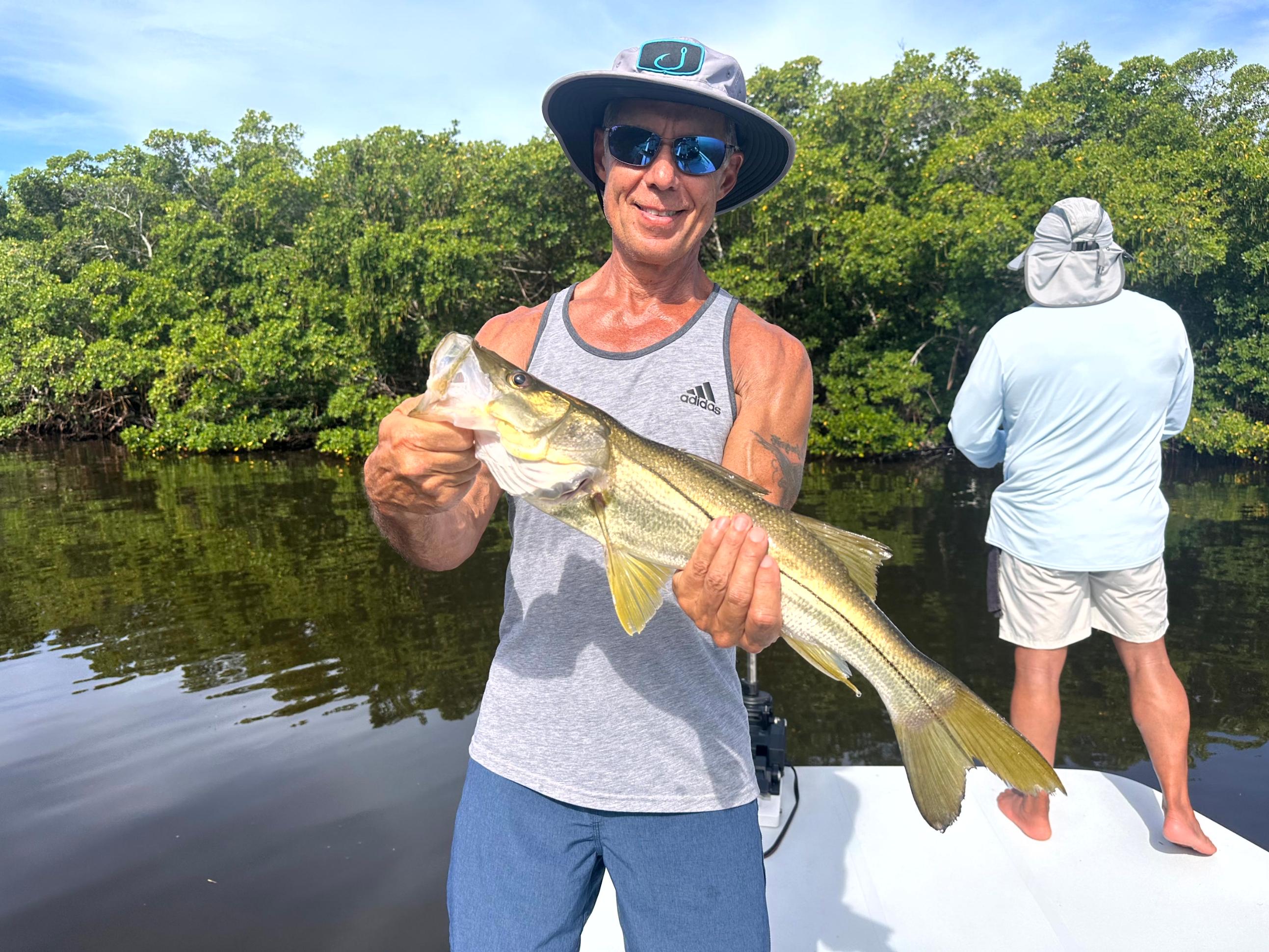By using our website, you agree to the use of cookies as described in our Cookie Policy
Mangrove shorelines in Tampa Bay are loaded with fish. The roots pack in baitfish, shrimp, and crabs. Predators like mangrove snapper, redfish, and snook stick close because food is everywhere. Every root, every shadow, something is moving or feeding. If you want steady action, this is where you start.

- Prop roots break up currents and give baitfish a place to hide
- Fallen leaves rot down, feeding the smallest critters
- Oyster beds form natural reefs along the roots
- Crabs and shrimp fill every nook and cranny
- Baitfish schools stick close to the roots for safety
Predators know where to look. They don’t waste time in open water when the mangrove edge is packed with food. Snook and redfish work the shadows, picking off anything that strays too far from cover. The action stays tight to the roots, and the fish stay hungry.
Tides Set the Table
Every serious angler in Tampa Bay watches the tide chart. Mangrove lines come alive when the water moves. On a rising tide, water pushes deep into the roots, flooding new ground and bringing in fresh bait. Shrimp, crabs, and small fish ride the current, looking for food and shelter. As the tide drops, everything gets squeezed out. Baitfish pour from the roots, and predators line up for the feast. The pattern never changes. Fish push into the thickest cover on high water. Then they slide out to the edge as the tide falls. Miss the timing, and you’ll miss the bite.
Fish don’t guess. They know when to move. On a strong incoming tide, redfish and snook push so far into the roots you can barely see them. When the water drops, they stage along the outer edge, waiting for bait to flush out. Tide knowledge isn’t optional. It’s the difference between a full cooler and a long, empty day. If you’re not sure how to read the tides or time your approach, our guides at Steady Action Fishing Charters can help you make the most of every trip.
Shade Keeps Fish Active
Midday sun in Tampa Bay can shut down a flat in minutes. Mangroves fix that. Their thick canopy throws deep shade over the water, cooling things off and keeping fish comfortable. Baitfish crowd the shadows, and predators follow. In the heat of summer, the difference is obvious. Fish stack up under the darkest branches, using the cover to ambush prey and avoid the worst of the sun. Summer fishing without mangroves means fewer bites and more frustration.
Shade isn’t just about comfort. It’s about survival. Baitfish know they’re safer in the dark. Snook and redfish know their prey will be there. The best action often happens right where the sun meets the shadow. Cast too far into the light, and you’ll miss the fish. Work the edge, and you’ll find the bite.
Precision Casting Pays Off
Fishing mangrove lines isn’t about luck. It’s about skill. The best anglers don’t just toss baits and hope. They work every angle. Parallel casts run tight along the edge, keeping the bait in the strike zone longer. Skip-casting under low branches puts lures where other anglers can’t reach. Dropping a bait right next to a root cluster draws out the biggest fish. Every cast counts. Miss by a foot, and you’re out of the game.
- Parallel casts keep your bait in the strike zone
- Skip-casting gets you under overhangs and into the shadows
- Short, accurate flips put live bait right in front of waiting fish
- Long casts along the edge cover more water and find active fish
Fish don’t wait for mistakes. They hit fast and hard, especially when the bait lands where it should. Targeting fish around mangroves takes practice, but the payoff is real. The right cast turns a slow day into a story you’ll tell for years. If you want to sharpen your casting skills, we’re always happy to share tips and techniques on the water.
Seasonal Patterns and Consistency
Mangrove lines don’t just work in one season. They produce year-round. In spring, baitfish spawn in the roots, drawing in hungry predators. Summer brings thick schools of mullet and pilchards, with snook and redfish right behind. Fall means cooler water and more aggressive feeding. Even in winter, when other spots go quiet, mangroves hold warmth and keep the food chain moving. The pattern stays the same. Find the roots, find the fish.
Weather shifts, water clarity changes, and wind direction can all play a role, but mangrove lines stay reliable. When open flats get blown out or the deep channels slow down, the mangroves keep producing. That’s why experienced anglers always check the shoreline first. The roots never stop working, and neither do the fish that hunt there.
Gear and Tactics That Work
Light tackle rules the mangrove edge. Heavy gear spooks fish and gets hung up in the roots. A medium spinning rod, 10-20 lb braid, and a strong leader handle most of what you’ll hook. Live bait—pilchards, shrimp, or pinfish—draws the most strikes, but soft plastics and topwater lures work when the fish are active. The key is control. Every cast needs to land tight to the cover. Every hookset needs to turn the fish away from the roots before it can break you off. If you’re looking for the right setup, our team can recommend gear that matches Tampa Bay’s unique conditions.
- Use weedless rigs to avoid snags
- Keep drags tight to pull fish out fast
- Watch for subtle bites—predators often hit and run
- Move quietly—noise sends fish deeper into the roots
Patience pays off. Work the same stretch from different angles. Change baits if the bite slows. The fish are there. They just need the right presentation. With Steady Action Fishing Charters, we help anglers adapt their tactics so every trip has a shot at success.
Ready to Fish Tampa's Mangrove Lines?
Experience the incredible mangrove fishing Tampa Bay offers with Steady Action Fishing Charters. Call us at 813-727-9890 or contact us to book your next fishing trip.
‹ Back


